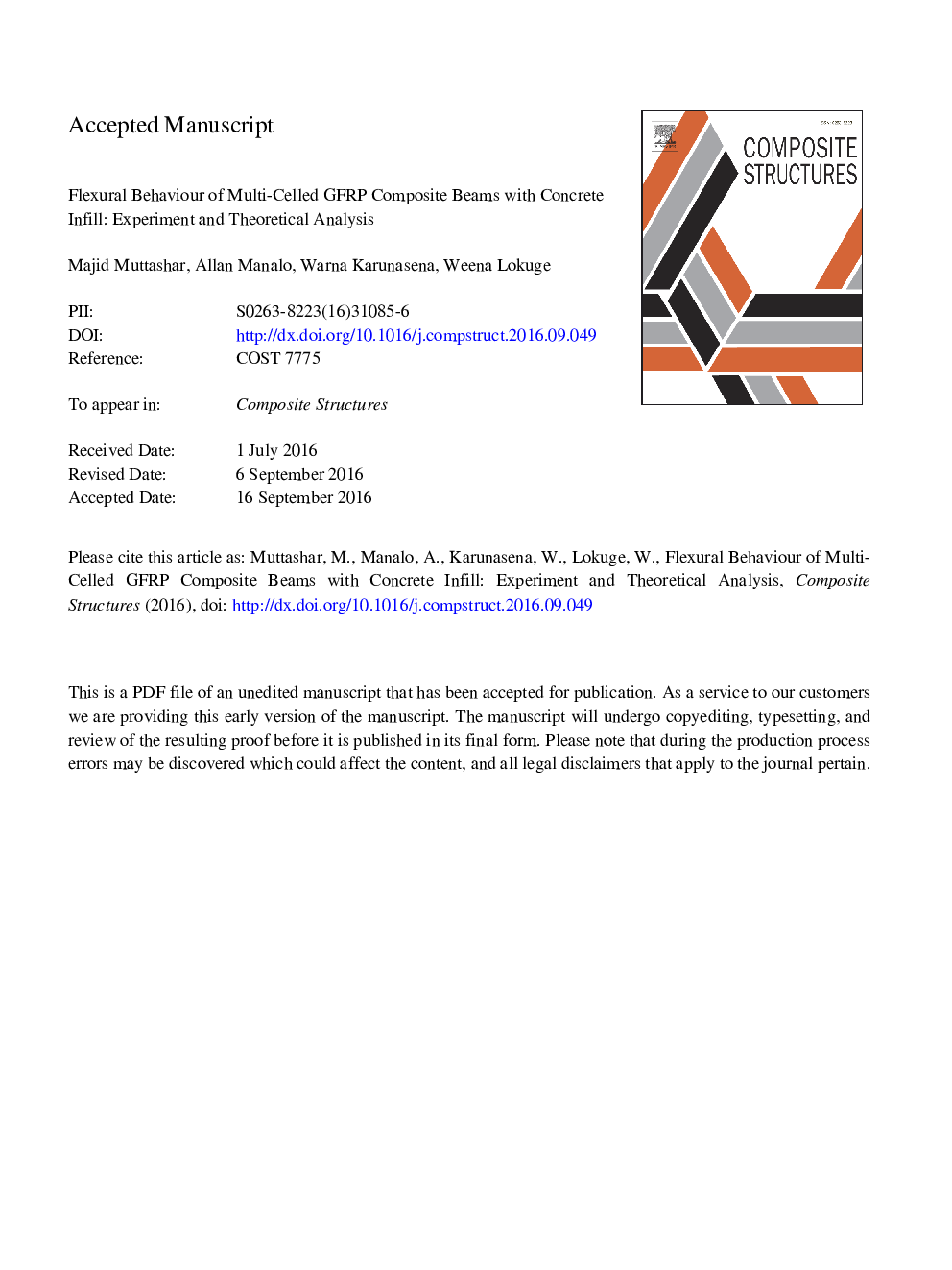| Article ID | Journal | Published Year | Pages | File Type |
|---|---|---|---|---|
| 4917886 | Composite Structures | 2017 | 33 Pages |
Abstract
This research introduces multi-celled glass fibre reinforced polymer (GFRP) beam sections partially filled with concrete. Hollow pultruded GFRP square tubes (125 mm Ã 125 mm Ã 6.5 mm) were bonded together using epoxy adhesives to form the beams using 2-4 cells. Concrete with 15 and 32 MPa compressive strengths was used to fill the top cell of the multi-cell beams. These beams were then tested under static four-point bending and their behaviour was compared with hollow beams. The results showed that up to 27% increase in strength was achieved by using multi-cell beams compared to a single cell beam. Filling in the top cell of the beams with concrete enhanced the capacity as well as the stiffness of the beams. The multi-celled GFRP beams filled with concrete at the top cell failed at 38-80% higher load and exhibited 10-22% higher stiffness than their hollow counterparts. The increase in the compressive strength of the concrete infill from 15 MPa to 32 MPa resulted in up to 14% increase in the failure load but did not enhance the flexural stiffness. Finally, the proposed prediction equation which account for the combined effect of shear and flexural stresses showed a good agreement with the experimental results for hollow cells and up to 3 cells of concrete filled beams. The bearing stress equation gave a better estimation for 4-cell filled section.
Related Topics
Physical Sciences and Engineering
Engineering
Civil and Structural Engineering
Authors
Majid Muttashar, Allan Manalo, Warna Karunasena, Weena Lokuge,
